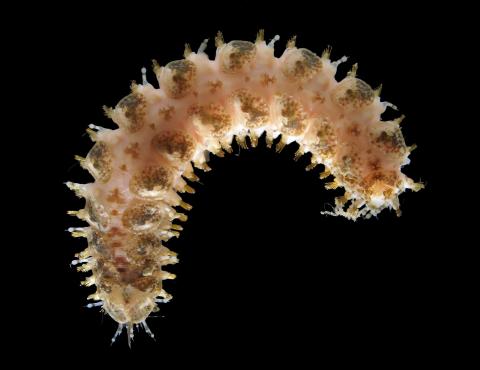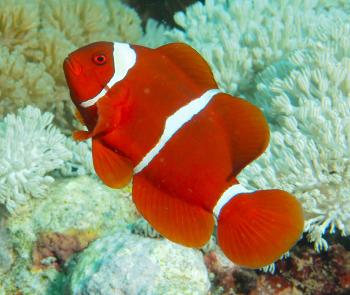
Each segment in Polychaete worms has a pair of fleshy protrusions called parapodia, which have bristles, called chaetae. Chaetae (sometimes called setae), from the Greek: “crest, mane, flowing hair," are made of chitin. The name Polychaete derives from this distinctive feature, which means “many bristled.” The chaetae help the worms stick to surfaces and to move.
The polychaete body plan is clearly very successful. The vast majority of annelids are polychaetes: of 9000 species of annelids, more than 8000 are polychaetes. These segmented worms live in all marine habitats from the sandy beach and muddy shores; from the ocean surface down to the midwater and the deepest ocean hot vents.
See our animation of the annelid body plan.
















